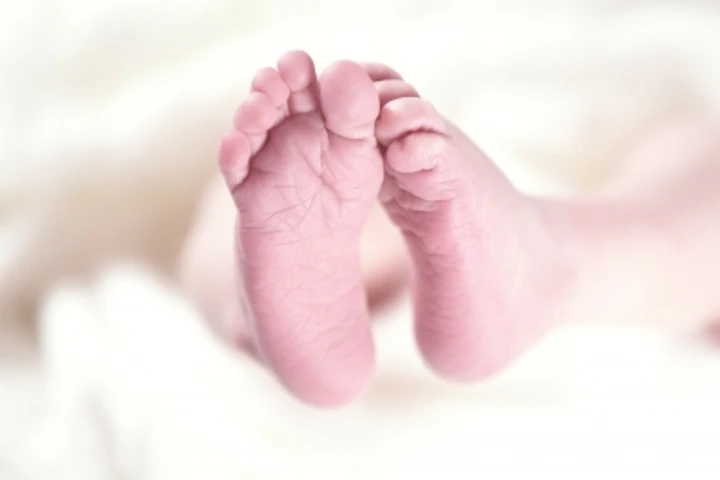

China's baby boom is long gone
<p>
<strong>China is steadily growing old. The country&rsquo;s ageing population is turning out to be its biggest socio-economic challenge. After registering only 12 million births in 2020, the country is expected to clock more deaths than births for the first time this year. Recent data revealed that in 2020, there were 8.5 births per 1,000 people signifying that it had fallen below the psychological figure of 10. According to the World Bank in 2019, the country&rsquo;s fertility rate fell below 2 to touch 1.70. It has further dropped in the last two years.</strong></p>
<p>
Birth rate refers to live births per 1,000 of the population every year while fertility rate is an individual parameter of a woman, indicating the average number of children she could give birth to in her lifetime.</p>
<p>
<strong>Also read: <a href="https://www.indianarrative.com/economy-news/china-s-consumption-driven-growth-story-may-derail-as-chinese-people-have-too-little-to-spend-120433.html">China&#39;s consumption driven growth story may derail as people have much less to spend</a></strong></p>
<p>
In 2019, China&rsquo;s mothers gave birth to 14.65 million babies. The decline in China&rsquo;s birth rate is increasing every year.</p>
<p>
In India, the second most populous country after China, the fertility rate in 2019 was 2.20. However, a <a href="https://www.hindustantimes.com/india-news/indias-fertility-rate-drops-below-2-1-population-stabilising-nfhs-data-101637751803433.html">Hindustan Times</a> report said it has dropped to 2 this year.</p>
<p>
Typically, countries must have a birth rate of at least 2.1 children per woman if it has to sustain the population balance.</p>
<p>
The International Monetary Fund noted that an aging population and slower expansion in the labour force affect economies in many ways. &quot;The growth of GDP slows, working-age people pay more to support the elderly, and public budgets strain under the burden of the higher total cost of health and retirement programmes for old people.&rdquo;</p>
<p>
An ageing population would mean slowing consumption.</p>
<p>
&ldquo;While the economic impact of a low birth rate will not be felt immediately, it is something that creeps into the social order gradually severely denting a country&rsquo;s overall framework,&rdquo; an analyst told India Narrative.</p>
<p>
End of the baby boom in many parts of Europe has already led to a drop in population and labour force growth in the continent. Economic growth is slowing in advanced economies at least in part because the end of the baby boom led to a decline in population and labour force growth&mdash;despite immigration.</p>
<p>
&ldquo;Beijing needs to honestly face its new demographic reality and treat it as a serious crisis,&rdquo; an article published by the <a href="https://www.scmp.com/economy/china-economy/article/3156977/china-population-dire-reality-crisis-underlined-coronavirus">South China Morning Post said</a>.</p>
<p>
&ldquo;China&rsquo;s shrinking population could last many decades before the trend reverses &ndash; if there&rsquo;s any reversal at all,&rdquo; it added.</p>
<p>
<strong>Also read: <a href="https://www.indianarrative.com/opinion-news/china-s-xi-jinping-strikes-a-bellicose-note-during-centenary-celebrations-of-the-ccp-99178.html">China&rsquo;s Xi Jinping strikes a combative note during centenary celebrations of the CCP</a></strong></p>
<p>
Rising living costs along with changes in the social contours are the main factors leading to couples choosing to continue having one child. In many cases, people are also reluctant to get married.</p>
<p>
&lsquo;Lying flat&rsquo; phenomenon&mdash;a large number of Chinese millennials are refusing to participate in the country&rsquo;s workforce.On 31 May, Beijing lifted the two-child policy allowing married couples to have three children.</p>
<p>
&ldquo;China&rsquo;s two child policy failed to have any impact, how can the three-child policy succeed,&rdquo; BR Deepak, expert on China and Professor at Jawaharlal Nehru University (JNU) noted.</p>
<p>
&ldquo;Forget all the other worries about China. The big problem is that the country is going to run out of its most productive workers. Ultimately, this means that growth will start grinding to a near crawl, at best,&rdquo; Forbes in a report said.</p>
US President Donald Trump on Saturday (US local time) called the continuation of the trial…
Protestors in Serbia took to the streets of Belgrade and demanded an early election, as…
The Ministry of External Affairs (MEA) on Sunday strongly rejected the Pakistani Army's claims, where…
Indian Army strengthens ties with Russian Land Forces at the 4th Indo-Russian Inter-Governmental Commission (IRIGC)…
The Indo-French Joint Military Exercise SHAKTI-VIII continues to strengthen operational interoperability and mutual cooperation between…
Prime Minister Narendra Modi attended the centenary celebrations of the revered Jain spiritual leader Acharya…